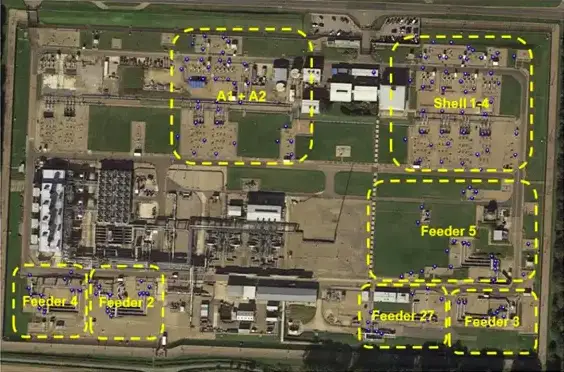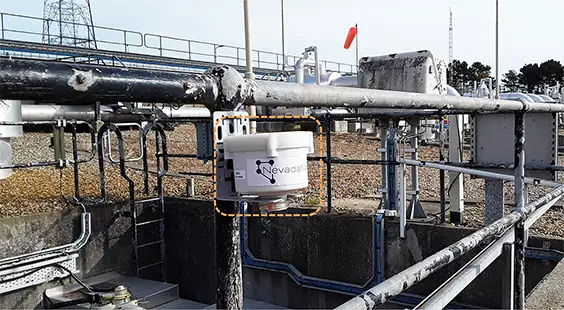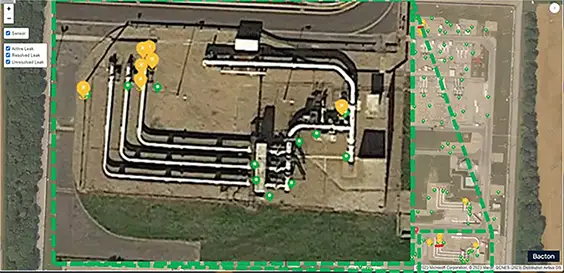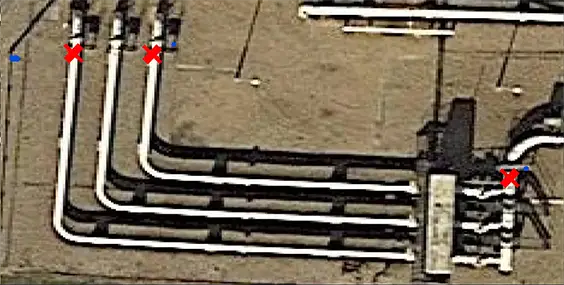CASE STUDY

National Gas Transmission Extends MethaneTrack™ Monitoring Pilot at Bacton Gas Terminal with Great Success

Alistair Carvell
Innovation Engineer
“The methane aspect of the project was a great success – we have shown that the system can be deployed with relative ease across our AGI sites, which will ultimately enable significant reductions in methane emissions from the network.
Additionally, the live field work to test the system’s hydrogen capabilities is a truly innovative first step towards the safe operation of a hydrogen network – ensuring we can minimize emissions from future hydrogen sites.
More work is needed across the industry in the hydrogen detection space, and we are proud to work with NevadaNano to develop their promising technology.”
Problem
The UK’s gas transmission network aims to achieve net zero carbon emissions by 2050, in line with the national target for the entire economy. To reach this goal, National Gas Transmission plans to focus on several key strategies:
- Decarbonizing the gas supply. This involves an increase in the use of low-carbon gases such as hydrogen and biomethane.
- Upgrading infrastructure and implementing new technologies to improve leak detection, mitigation, to reduce environmental impact.
Solution
As part of the measures to reduce the carbon footprint of the gas transmission network and to support the UK’s broader net zero objectives, National Gas approached NevadaNano to explore using MethaneTrack™ at the Bacton Gas Terminal for its close-proximity emissions detection and reporting technologies.
A large site pilot program was set up for the MethaneTrack™ system to detect, locate, and determine the size of leaks occurring at the Bacton Gas Terminal. It was required that each detected leak data provided would include start and stop times and be visualized in an easy-to-read manner that could allow Bacton engineers to investigate the causes of the leak and, if possible, address the cause and fix the leak.
Rapid Setup and Deployment
The Bacton Gas Terminal, located on the coast of Norfolk, England, is a crucial hub in the UK’s gas supply infrastructure. Owned and operated by multiple companies, Bacton Gas Terminal includes facilities managed by Shell, Perenco, and National Gas Transmission.
Bacton receives natural gas from offshore fields in the North Sea through pipelines, the gas is then processed to remove impurities and ensure it meets quality standards before being sent to the National Transmission System (NTS). Additionally, Bacton plays a role in international gas trade, with interconnectors linking the UK to continental Europe for gas import and export.
With such a large site, 155 endpoints were installed to monitor 7 key leak areas, with 2 anemometers, all connected to 2 LoRa gateways, for seamless data integration and cloud connectivity. Because MethaneTrack™ uses battery-enabled endpoints, installation of 155 endpoints was completed in just 3 days. Furthermore, the system required no additional wiring or affected any operational teams on site.
Results
During the 6-month deployment at the Bacton Terminal, NevadaNano’s MethaneTrack™ system detected a total of 161 leak events ranging from less than 1 scfh (0.03 kg/hr) up to 9.1k scfh (231 kg/hr). Total emissions from the monitored portions of the site were 9,990 kg during this period.
The 161 leaks that were detected were those normally present at the site, ranging from seals beginning to leak, operational venting and recompression, and fugitive emissions. On-the-ground investigations performed by site engineers confirmed that the MethaneTrack™ location was typically within 5m of known leak locations and was able to consistently detect persistent emissions greater than 1.0 L/min and occasionally detect leaks as small as 0.2L/min.
Bacton engineers and operators were able to verify several LSI™ Leak Events using other detection methods, and round-trip LSI™ events by:
- MethaneTrack™ detected, located, and quantified emissions, an LSI™ event
- Site engineers selected an LSI™ leak events for verification.
- Site engineers went to the calculated leak location and assessed the area for known fugitive emissions and/or processes that could cause operational emissions.
- Results were summarized and shared.
Once commissioned in October 2023, MethaneTrack™ began detecting emissions and generating LSI™ events with leak rates between 0.1 – 0.2 kg/hr and all had short durations (<6 hours).
The site team were able to perform site verifications, started with 7 LSI™ Leak Events reported near Feeder 7 from late October to early November 2023
Verification
Observations from the on-the-ground verification:
- Three small persistent leaks from valve stabbings were identified.
- Locations indicated with red x’s on the lower figure.
- Qualitative leak rate information provided by aspirating gas monitor.
- One leak produced no readings, but could be heard audibly.
- Two of leaks produced 12% LEL and 23% LEL readings when the gas meter was 50 mm from the source.
Verification demonstrates that MethaneTrack™ leak location and rates agree closely with the ground-truth:
- 5 of 7 locations within the 5m design target.
- Leak rates qualitatively verified.
Next Steps
National Gas Transmission have extended the trials of both sensor deployments, using the Bacton install to learn more about how the system can be integrated with site operations, and the Future Grid install to develop the hydrogen and hydrogen-blend detection capabilities of the system. The collaboration will now run until the end of March 2026.




